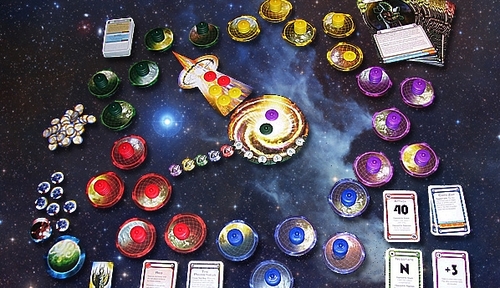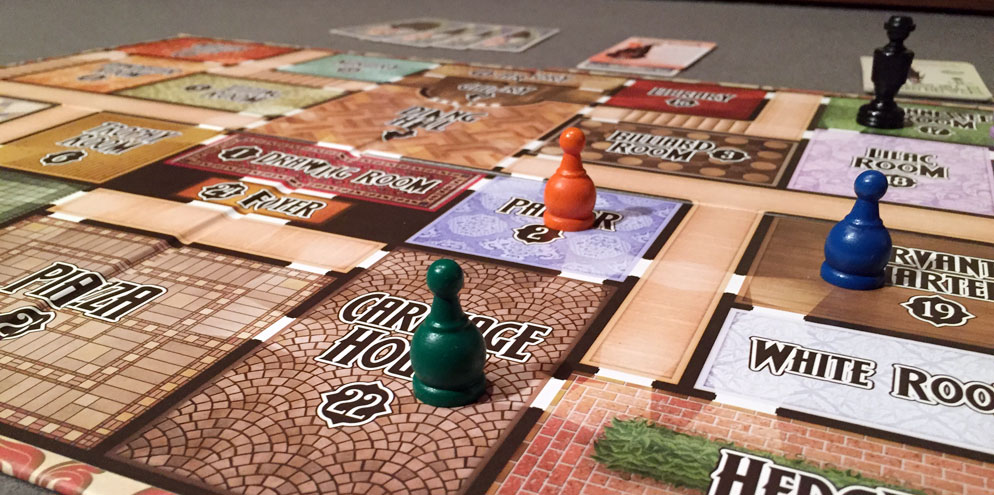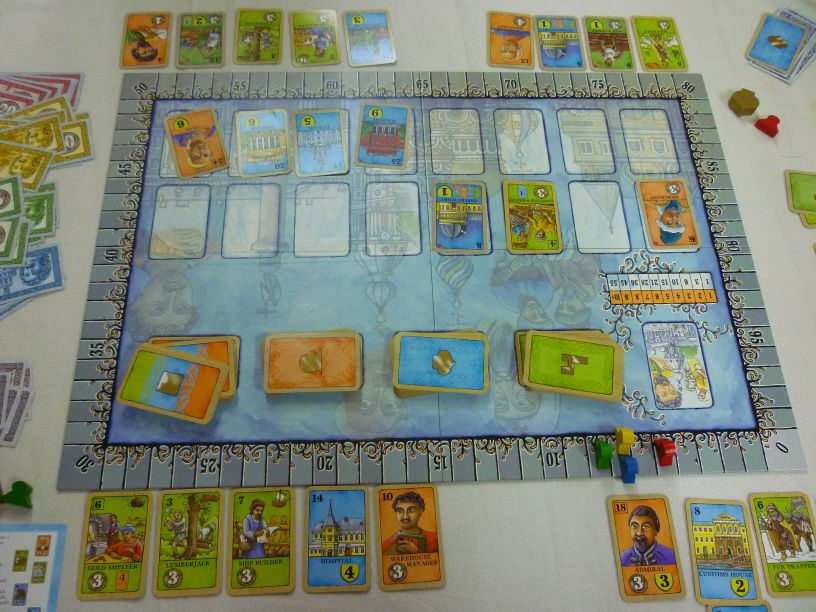Designed by Bill Eberle, Jack Kittredge, Bill Norton, Peter Olotka, Kevin Wilson.
Cosmic Encounter is the sort of game you play if you long to be an Amoeba or a Virus with a penchant for stabbing your friends in the back.
You start the game with five planets, and four ships on each planet. You want to get your ships on 5 of the other guys’ planets. At the start of each turn, you’ll draw a card that tells you who to attack, and from there, you have to figure out how to go to war. You have several tools at your disposal, but most crucially, you can ask other players for help. If you get an ally to help you raid another guy’s planet and are successful, you’ll BOTH land ships on that planet and send their ships to the void. But they can ask for allies, too.
Interesting Innovation: Special Abilities. Cosmic Encounters is probably not the first game to give different races special attacks, but they are likely the most ambitious about it. The most recent reprinting of the game has about 50 of them. And many, many of them are gruesomely overpowered. The game pretty much depends on players identifying players who have huge advantages and ganging up on them to balance them, because the power differential between various races is titanic-sized.
A game 30 years old, Cosmic Encounters is STILL the premier game regarding diplomacy and negotiation, which is to say it’s a great game if you have a table full of wheelers and dealers – or who think they are.

(Photo Credit: One Of Us)








Recent Comments